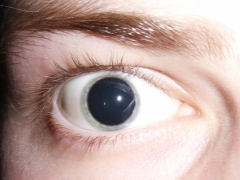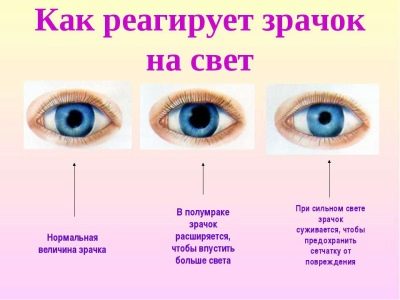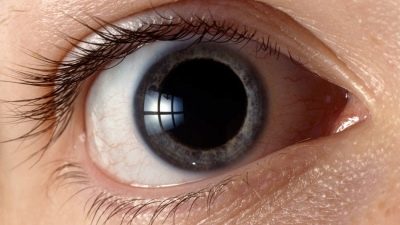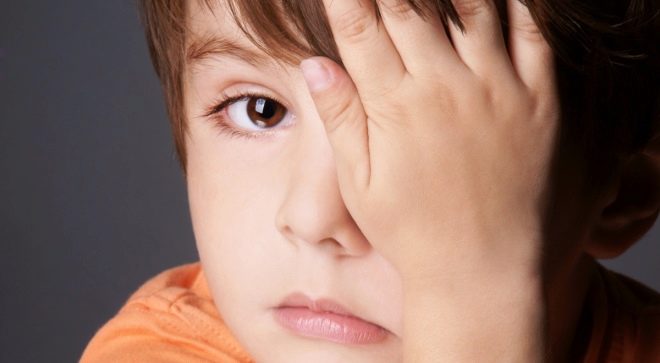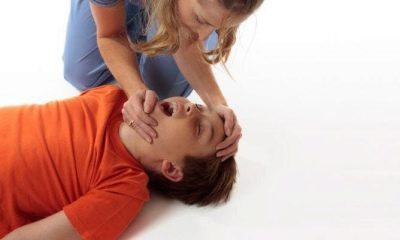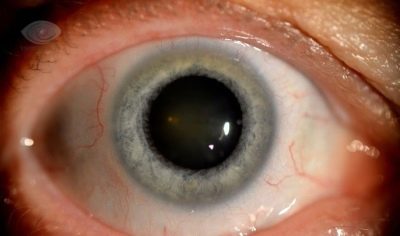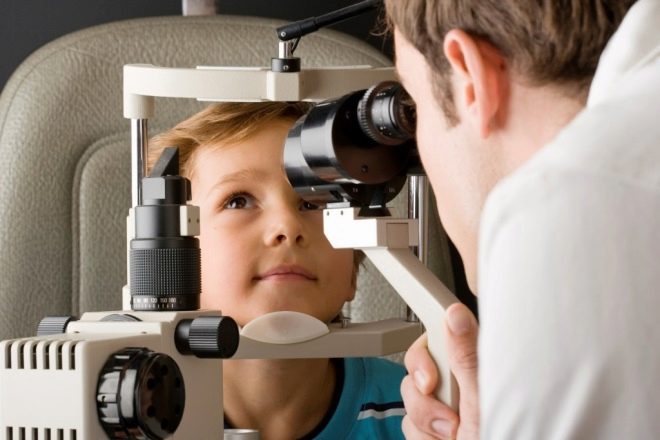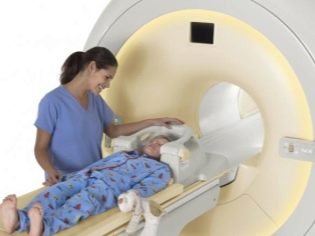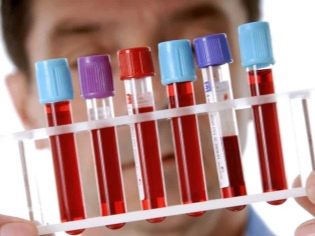Causes of dilated pupils in a child
Expanded pupils in a child justifiably alarm and alarm the parents. Why is this happening, is everything in order with the baby - the priority questions that parents ask.
What it is?
In the professional language of health professionals, pupil dilation is called mydriasis. This phenomenon is not considered a disease; rather, enlarged pupils can be considered a symptom. To indicate such a symptom can be either an absolute norm or an existing pathology. The ability of the pupil to expand and contract due to the work of the eye muscles and the same nerve. Everyone knows that bright light causes a spasm and the pupil reflexively narrows. Lack of light, twilight, twilight, on the contrary, contribute to the expansion of the pupil - in this way the eye “adjusts” to the human environment, creates the best conditions for more light rays to hit the retina.
The pupil is essentially an entrance gate for light rays, and how widely these “gates” will be opened depends on the reaction of the nervous system, or rather, the fibers of the third pair of cranial nerves. If a child's pupils dilate in response to a decrease in light, then there is nothing abnormal or painful about it. So conceived nature. Parents usually start sound the alarm when the pupils of the baby are dilated constantly, regardless of what conditions the child is lighting. Even such a phenomenon can find quite normal explanations that have nothing to do with diseases.
Not always mydriasis is pathological and in need of treatment.
The reasons
The basis of the expansion of the pupil is always the reaction of the oculomotor nerve to a certain irritant - external or internal. Physiological, natural causes usually cause bilateral uniform mydriasis, that is, both pupils are dilated in the same way. It is possible to distinguish such a physiological process from a disease or a disease state by the reaction of a child’s eyes to light. If the pupils do not react to the bright light by narrowing, it is most likely that this is a pathology. The main causes of mydriasis should be considered.
Physiological
The increased diameter of the pupils in the newborn and the infant should not cause anxiety in the parents, because the visual function is still being formed in the baby. After birth, baby sees the world as blurred spots of varying intensity. A newborn and one month old baby has an important task - to learn to focus on the subject, and he tries to master this skill as soon as possible, because he already is interested in what is happening around, he learns to recognize and perceive colors.
The organs of view of the baby are under tremendous pressure, the expansion of the pupil in this case is considered to be a normal reaction of the autonomic nervous system to stimuli from the outside and to the internal processes of formation that proceed at a rapid pace. If the infant mydriasis persists up to 3 months, then there is nothing pathological in this phenomenon.
Extended pupils in older children may be related to the fact that in the child’s room the parents carefully created a muffled dim light that does not “hit” in the eyes.If at the same time the child walks a little outdoors in the fresh air, often in low light conditions it loads organs of vision by watching cartoons, playing at the computer, then there is nothing surprising that mydriasis begins to be almost permanent. Eyes simply adapt to the external conditions of human existence.
It is noteworthy that changing the lifestyle of such a child, frequent walks, active sports, reducing the amount of time spent at the TV and computer monitor, leads the child's pupil diameter to normal, but not immediately, but gradually.
In the same way as the pupil's “habit” of constant expansion was developed.
Hormones can affect the size of the pupils. For example, in a state of severe stress, fear, joy, increased anxiety, a child in the body begins to produce different hormones, and the pupil immediately responds to changes in the hormonal background by expansion. So, quite often parents begin to notice constantly dilated pupils in children at the age of 3, at 7-8. In the first case, probably, stress is associated with the start of kindergarten attendance, and in the second, with the loads and stresses associated with the start of schooling and the growth of the emotional load.
The pupils of a child who is experiencing because of conflicts in the family, disagreements with peers who has been in a state of worrying and excitement for a long time, for example, due to upcoming exams or important competitions, can be constantly extended.
Careful attention of adults to the problems of children and adolescents will help in time to find stress factors and eliminate them.
Pathological
Pupillary dilation is accompanied by many pathological conditions. So, by the reaction of the pupil, doctors can judge about the onset of a state of shock in case of severe pain or as a result of large blood loss. People in coma always have dilated pupils. Less serious conditions, which are also accompanied by mydriasis, are as follows.
- Taking certain medications, as well as drugs and alcohol;
- Infectious diseases associated with intoxication;
- Inflammatory processes in the membranes of the brain (meningitis, encephalitis, and others);
- Traumatic brain injury;
- Poisoning;
- Problems with metabolism (in diabetes mellitus and a number of other chronic pathologies);
- Eye injuries;
- Visual diseases (glaucoma);
- Vegetative dystonia;
- Epilepsy;
- High intracranial pressurehydrocephalus;
- Tumor processes, brain formation.
The most common causes should be described in more detail.
Shock states
Shock can occur not only as a result of severe pain that a child could experience at the time of injury, but also as a result of a severe allergic reaction, overdose of medications, significant blood loss. In all these conditions, the expansion of the pupil is caused by two “emergency” hormones - adrenaline and cortisol. They begin to be produced in large quantities in order to translate the body into an “economical mode” in an emergency situation. The blood vessels constrict, blood flow slows down, all systems operate in a slow, gentle mode under the conditions of "energy saving".
The dilated pupils become normal after the necessary medical aid is provided to the child and the hormonal background begins to stabilize.
Traumatic brain injury
Concussions of the brain, as well as bruises and hematomas, are most often accompanied by mydriasis, and it is asymmetrically uneven - one pupil is larger than the other, the right and left pupils react differently to the test with light. This becomes possible as a result of trauma (compression, paralytic state) of the cranial nerves, a center in the brain that regulates the activity of the oculomotor nerve. Pupil dilatation is an important diagnostic sign of head and brain injuries.. Additional symptoms may be different - from the occurrence of nausea and headache to a convulsive state, loss of consciousness. The child necessarily need qualified medical care.
Epilepsy and increased intracranial pressure
An epileptic seizure, like intracranial hypertension, causes disturbances in the functioning of the third pair of cranial nerves. The diameter of the pupil, therefore, simply ceases to be regulated. Mydriasis accompanies an attack in the case of epilepsy, often a companion of a generalized convulsive state. With increased pressure inside the skull, the pressure on the cranial nerves is carried out for a longer and systematically, so the expanded pupil diameter may be a sufficiently long symptom for the child.
Poisons and toxins
The most dangerous poison that can cause paralysis of not only the eye muscles and nerves, but also the muscles of the respiratory system is Botox. He can get into the body of a child with poor-quality canned meat or fish, with sausage products. Many chemical poisons that a child may take by mistake, having reached the household supply of household chemicals left unattended, also cause pupil dilation, and this is only one of the symptoms of poisoning. Alcohol and drugs have a moderate effect on cranial nerves - marijuana, cocaine, synthetic mixtures. Under the influence of these substances, the brain ceases to regulate the processes of inhibition and excitation of the nervous system, which results in temporary mydriasis.
Particular attention from parents often require dilated pupils in adolescents. If the mydriatic state is accompanied by inadequacy, odd behavior, unusual reactions to ordinary things, it is a reason to think about whether the child is taking drugs.
Medicines
To cause the expansion of the pupils in a child can receive drugs such as barbiturates, antispasmodics, sometimes hormonal drugs. For example, "Prednisolone”, Which can be recommended for the treatment of severe allergic reactions and other ailments, makes the body more susceptible to adrenaline, which, in turn, dilates the pupils. Poisoning with these drugs is manifested not only by pathologically dilated pupils without reaction to light, but also by other symptoms - confusion, loss of consciousness, convulsions, a drop in blood pressure, and vomiting. You can not wait, you need to provide emergency assistance and call an ambulance.
Recommendations of Dr. Komarovsky
In most cases, parents tend to somewhat exaggerate the problem of dilated pupils, the famous pediatrician Yevgeny Komarovsky believes. But it is better this way than to miss and ignore the symptoms of pathological conditions. You should not try to find the cause of constantly dilated or asymmetrically enlarged pupils in a child. It is best to be examined. It should begin with a visit to an oculist and a neurologist.
Often, to confirm those or other suspicions that the doctor has, they prescribe an MRI of the brain or an electroencephalogram, as well as a general and biochemical blood test, which will make it possible to determine the concentration of certain hormones. If the doctor according to the results of the survey says that no pathologies have been found, then parents should accept this fact. In the end, the size of the pupils in a child can be an individual feature of appearance. But this thought should come to mind to parents at the very least when the child has already been examined by specialists.
You can find out more information about the child’s vision in the following video.
